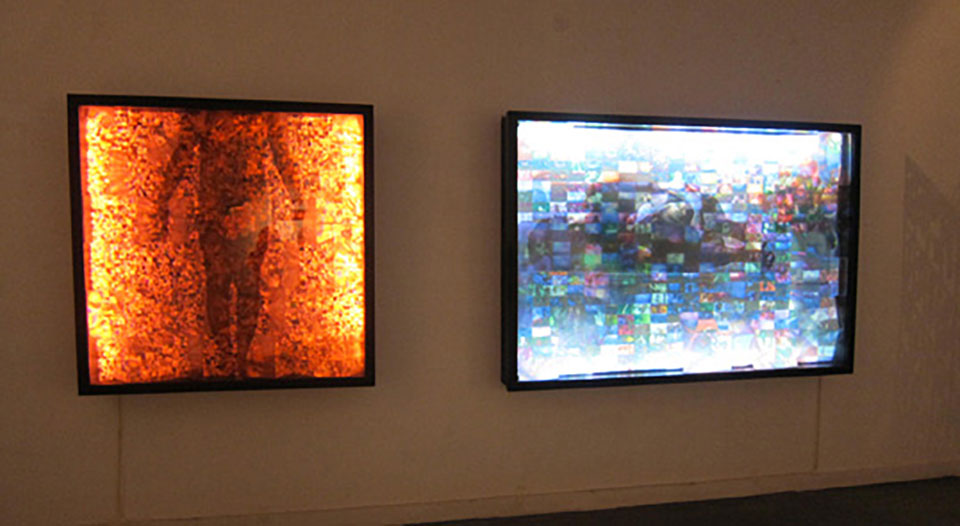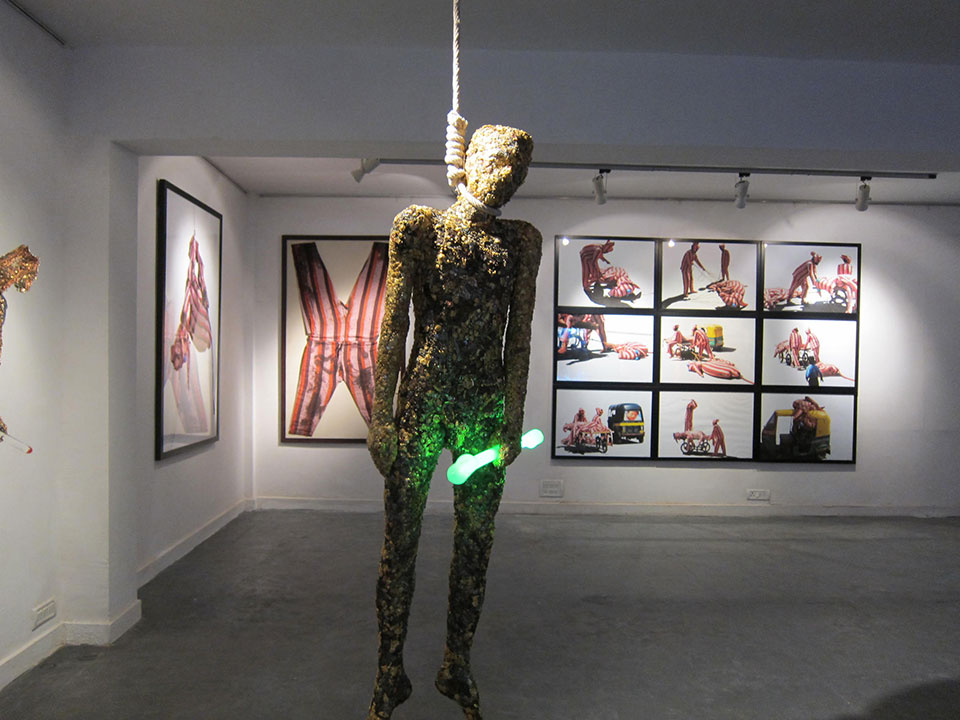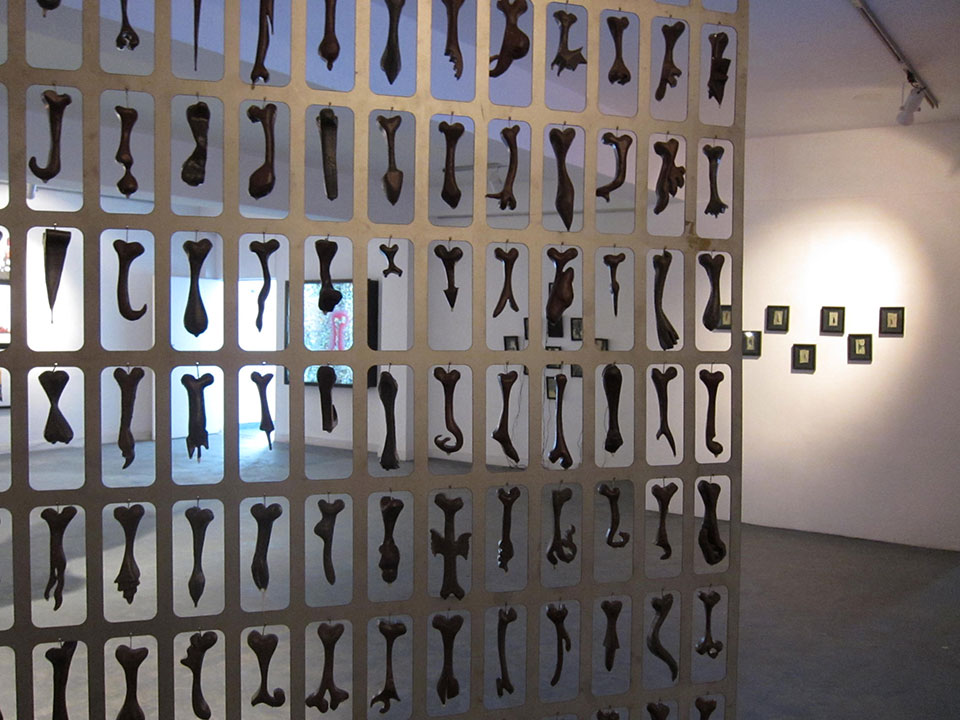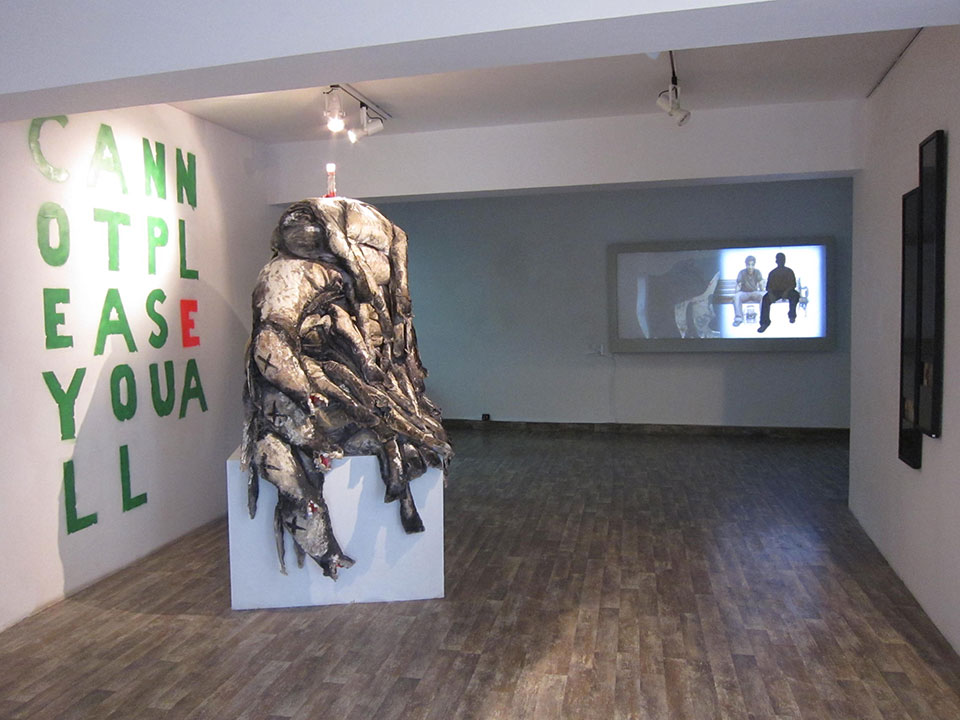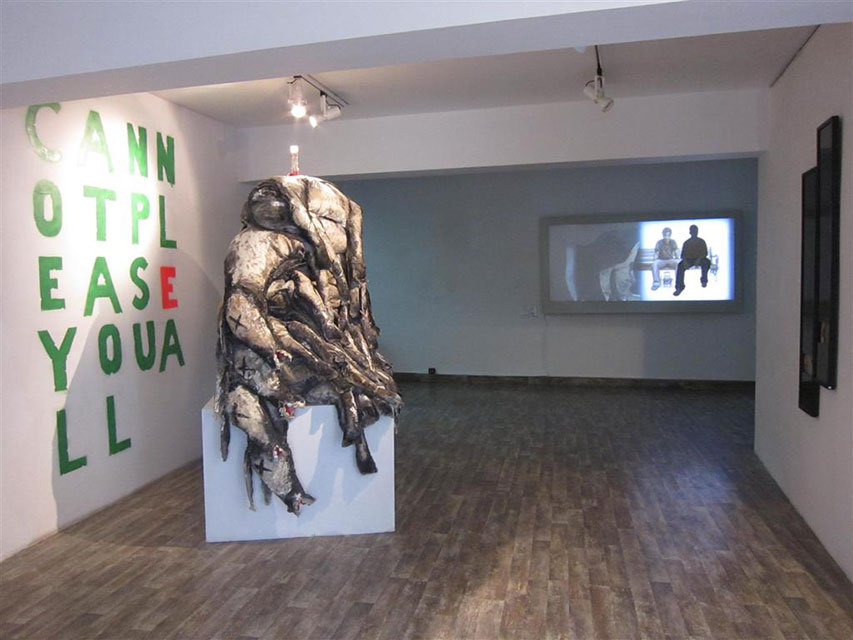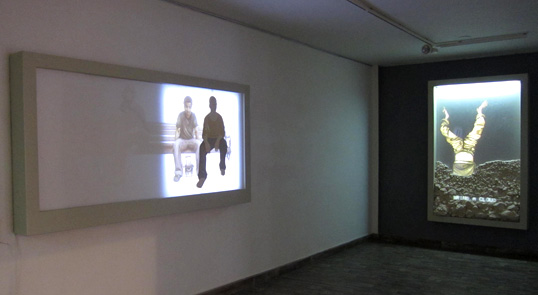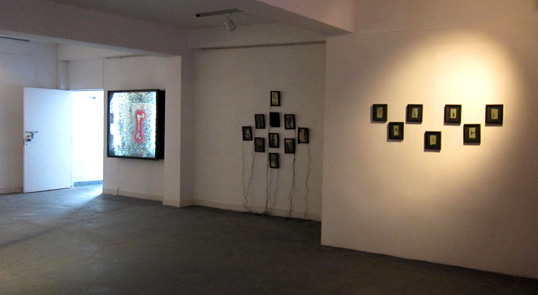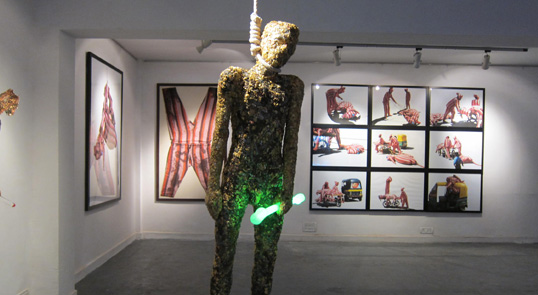Urban Testimonies
Jul 16, 2010 - Aug 19, 2010
- SELECTED WORKS
- CURATORIAL NOTE
- INVITE
- PRESS RELEASE
- DOWNLOAD CATALOGUE
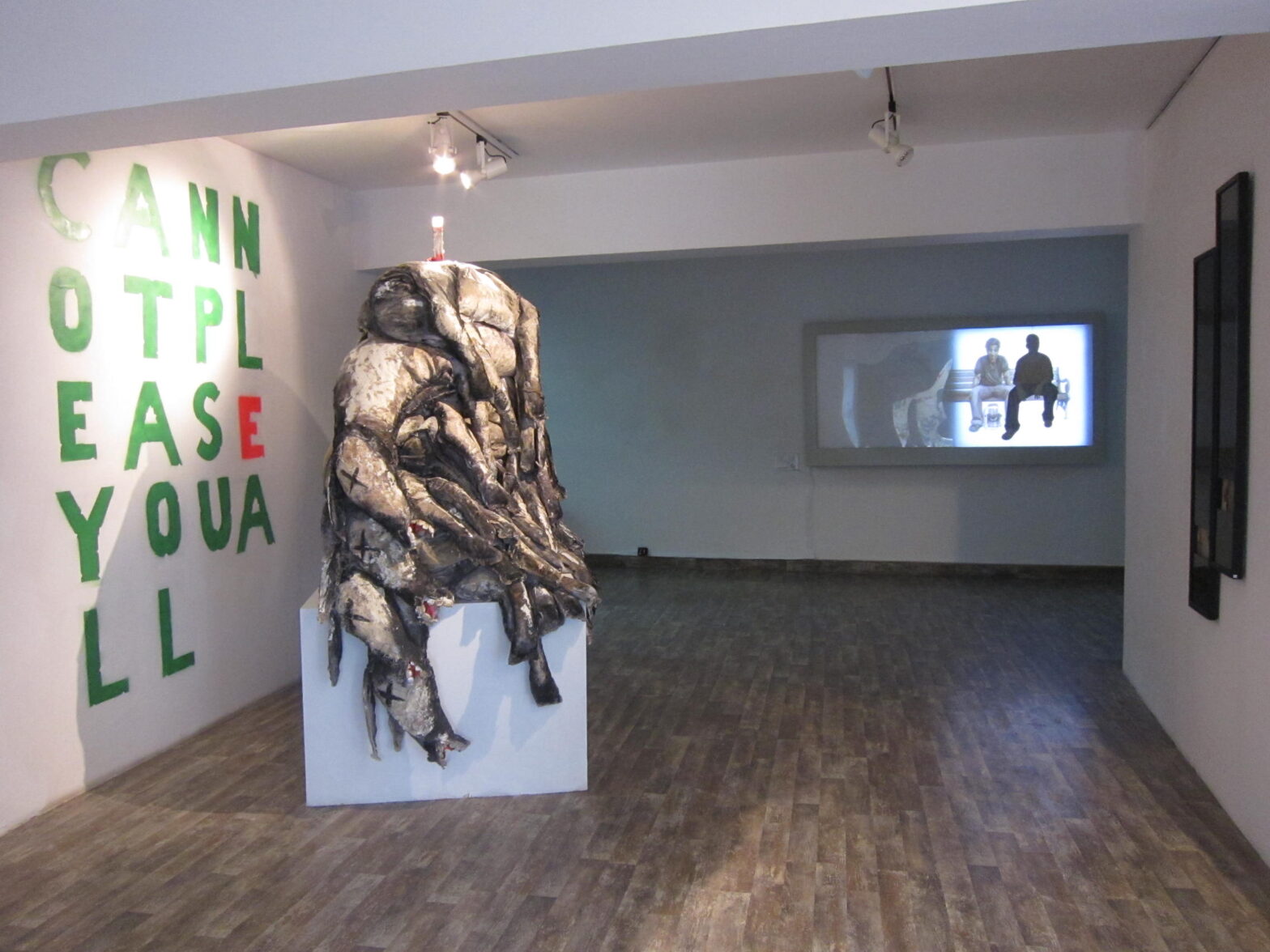
‘All art is experimental or isn’t art.’
– US film and video critic Gene Youngblood
‘Urban Testimonies’ is a curatorial experiment with these young artists, who have shared a common pedagogical ground and their works are indexical of the ‘contemporary’ vocabulary evolving at M.S.U. Baroda today. The works bring forth the mediumistic shift as well as experimentation with the existing ones supplemented by vibes of a candid and fresh thought process. The shift is also from ‘objective’ representation to personal expression; use of technological media to render meaning and new ideas of time and space. The genesis of ‘experiment’ in their practice is influenced by the technologies of speed, the culture of acceleration, and the virtual experience and within this realm of the consequent flux, the vigilant body undergoes while it sees, hears, surmises, moves, breathes and changes. Use of varied media in their work is itself an interesting by-product while the modes of personal subjectivity continue to weave a string of personal statements. As time persuades its route, they pitch themselves in an ‘Enlivened Testimony’.
CURATORIAL NOTE
‘All art is experimental or isn’t art.’
– US film and video critic Gene Youngblood
‘Urban Testimonies’ is a curatorial experiment with these young artists, who have shared a common pedagogical ground and their works are indexical of the ‘contemporary’ vocabulary evolving at M.S.U. Baroda today. The works bring forth the mediumistic shift as well as experimentation with the existing ones supplemented by vibes of a candid and fresh thought process. The shift is also from ‘objective’ representation to personal expression; use of technological media to render meaning and new ideas of time and space. The genesis of ‘experiment’ in their practice is influenced by the technologies of speed, the culture of acceleration, and the virtual experience and within this realm of the consequent flux, the vigilant body undergoes while it sees, hears, surmises, moves, breathes and changes. Use of varied media in their work is itself an interesting by-product while the modes of personal subjectivity continue to weave a string of personal statements. As time persuades its route, they pitch themselves in an ‘Enlivened Testimony’.
Ranging in format of a photo as well as TV-based installation alongside renditions on paper stuck on svelte acrylics, Kartik Sood’s works become objects of closer introspection with every perceptible glance. Favoring hybrid processes of appropriation and manipulation of found objects and archived photographs, he explores the tension between the handmade and mechanical, the visible and concealed, the material and conceptual. Sood creates an interface with the element of ‘time’ – preserving the past and mapping cultural metamorphosis through the medium of photography – as Roland Barthes, Susan Sontag and other have argued – any moment captured by the camera is a moment past a tiny increment of lived time preserved against eternity. His multiple protagonists, testimony of the personal reverences, get enlivened and illuminated through the technological ‘heart strings’ forming quiet images of contemplation; but soon revealing an enigmatic, disquieting nature. By being extracted from their original context and time, Sood creates with them fragments of lost narratives, elements of incomplete text carefully recomposed to suggest new meaning. “The point of interference is where the shadow of the elapsed congregates the idea of the forthcoming…. The structures are usually extremely dual and within them, through the unseen threads…stitch the garment of our lives and experiences which are tender and fragile, unsure and true” says Sood.
Deepjyoti Kalita centers his recent works around an increasingly dominant temporal dimension which to him is akin to the flux between inverse faculties of thoughts: intuition versus criticality, reason versus unreason in the sphere of human experiences and perception. Art forms devised in conjunct with time-based sequence aided through technological apparatus like LED light provide for fragmentation of aesthetic experience, realized only through a certain period. The interplay of images, to the artist, is fragmentary, representing, with every frame, the evanescent and the obscure yet when seen collectively and repeatedly reveal the essence of routine. The Incompetence of Being Complete extols the philosophical tension generated through a similar mechanism. The central figure variably travels from one destination to another as maneuvered by the artist creating an inconclusive ground for the viewer. Decode moves towards disorder or autocratic order of a sort. According to the artist, the order of images appearing
in non-conforming form elicits a sense of rebelliousness in method and manner which challenges the very essence of commands placed on us by society today. The restlessness persistent in his works is similar to gesture of alienation faced during the process of migration. An animated movement configures context of dislocation-relocation, fixity-rootlessness, belonging-alienation.
Siddhartha Kararwal stimulates visual assimilation through a body of work that sprouts out of polemics arising from the privilege of an embodied experience. The bodily experience of the artist vis-à-vis the macrocosm gets situated through a schematic narrative build around using digital frames and performance based montages, reflective of Kararwal’s continual practice. In the comic strip posited as Kalki, he situates himself within the mythological dilemma of the 21st century, which even if remotely, blinks now-and-then in ‘our’ minds. Be it in form of the apocalyptic visual modality of 2012 evolving through the mediated culture or gospels already read and scribed of the avataric Kalki, the artist ponders through in his own absurd and eccentric way: “The world as we know will cease to exist. And a new age will dawn. …. When will he come? What will be the sign? How will we know?” Within these streams of hyphenated thoughts, Kararwal evolves an event of birth – one of his reverie-smitten personalized Hindu prophetic figure. An incarnation landed directly from an imaginary spaceship cares less to adorn a haloed avatar and more to cleanse planet of all its manufactured waste, foretelling tales of immediate exigencies. Through Skinned, Kararwal calls into flashpoints of violence activated at everyday guises in local neighborhoods. Kararwal brings this metonymical skin within the investigative purview of the viewer and extends the emblematic quality of the event through an enhanced narrative read much like a crisp news-story. Another trigger of his deliberations is the series of 10 performance-montages titled Whackass! staged in collaboration with another artist Prayas Abhinav during the Sandharbh artist workshop in 2009 at Baroda. Dragging stuffed donkeys dressed as a clown throughout the city in an erstwhile action; he creates present associations through a conflated documentation of the event mapping links through manipulated renditions with the iconic theatricality of this city. Stuffed donkey models have persistently acted as Kararwal’s muse – a metaphorical adjunct of a society that lies mute to its own noise.
Disquieting states of mind synthesize the existential and political in Nityananda Ojha’s oeuvre – forces central to his practice. The evocative works mediate their existence through a fascinating materiality evolved through the language of sculpture, although most unconventionally. Deploying objects of fetish like jewellery, diamonds alongside unyielding ones like stone, Ojha approximates the abstract ethos associated with them. Imbuing meaning to his form through use of material with innate qualities, the artist seeks to plumb into depths of human psychological needs and drives, transcribing a universal appeal and language for his works. No Other Way welded in jewellery which to the artist is an aristocratic symbol, lays scourge for desolation and impending pain in the understated reality. These gestural musings also act to reveal psychological compulsions suffocated within the societal bounds, yet evident of the infinite faith the artist has in the transformative possibilities of life. Ojha has been consistently building on the bone for some time now, celebrating the spirit of inevitability and resurrection of emotions as well as life.
By Suruchi Khubchandani








